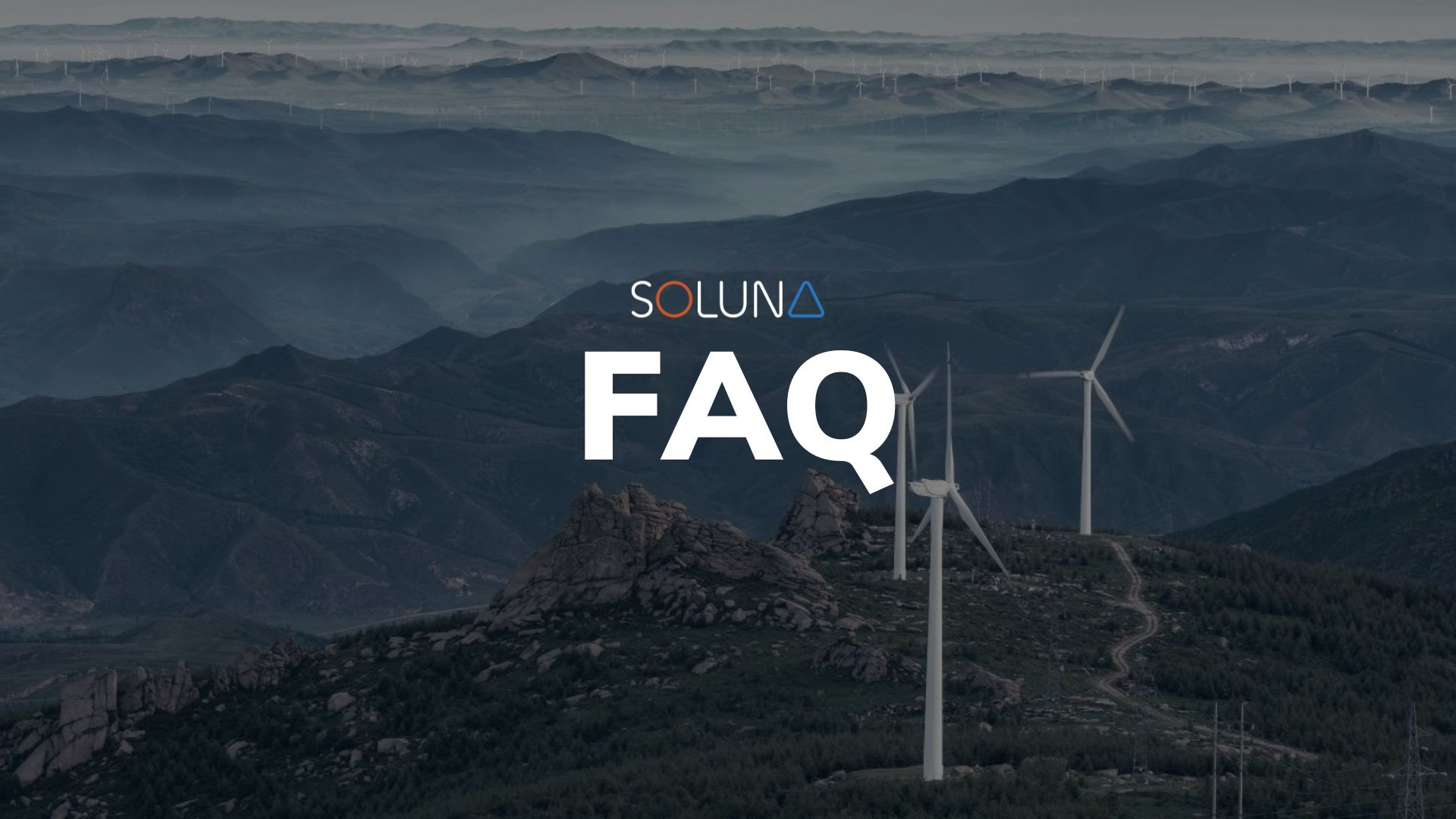Welcome to another installment of Soluna’s AMA (Ask Me Anything) series, where you — our readers and our followers on Twitter and LinkedIn — can get your questions answered.
In this Q&A, John Tunison, CFO of Soluna answers shareholders’ and potential investors’ most-asked questions.
Learn how to submit your questions at the end of this AMA.
Anonymous asked: Does Soluna currently provide Bitcoin Hosting to the BIG 3 miners in the USA, Mara, Cleanspark, and Riot? If not, are there opportunities for Soluna to consider partnering with?
Although not all of the big 3 are currently our customers, we do host multiple companies that rank in the top 20, including in the top 3, and have ongoing and meaningful discussions with many regularly. Soluna has already earned a reputation as one of the best BTC hosting providers in the industry, and we receive frequent inquiries about upcoming hosted space. The overwhelming interest in Project Dorothy 2 and Project Kati is a testament to the growth of our brand in this space.
Kris asked: $APLD just received confirmation of up to $5 billion in with a collaboration with $NVDA, President Donald Trump has mentioned $20 billion and more in funding for Data Centers and AI about a week ago, we know Soluna is involved with Nvidia as well, will Project Rosa receive any funding from either the Biden Administration or the Trump promise to bring investors to Texas, maybe you can comment on this further. Thank you
These are exciting times to be an AI data center developer! Yes, we are absolutely pursuing a range of funding options, including some of the ones you mentioned, as well as opportunities to partner with some of the largest global infrastructure funds. Stay tuned for more news in due course.
John asked: What type of AI workloads will be suitable at Soluna’s (greenfield) sites? Will this be limited, as all sites are currently co-located at windfarms in remote areas and have limited uptime?
Perhaps oversimplifying AI, there are 3 main steps in Large Language Model (LLM) development and use: 1. Training 2. Fine Tuning 3. Inferencing. The first two are very well suited to behind-the-meter, renewable power plants co-located at data centers such as the ones we are developing, as they are highly batchable and have slightly lower latency requirements. Inferencing applications are typically best suited for data centers located near Tier 1 data hubs. Uptime is less of a factor because of onsite power redundancy solutions that enable our data centers to fully achieve Tier 3 uptime requirements of 99.982%.
John also asked: Are you actively exploring M&A opportunities with companies that have a stronger balance sheet? It would make it much easier to execute on the capital-intensive (un)dislcosed project pipeline of Soluna. It would be a win-win for some peers with no/low presence in ERCOT and/or limited expertise in AI / HPC. In my opinion, Soluna would have a lot to offer to get a great deal!
If we were, or are not, pursuing M&A opportunities, we would not comment on that – so I will not here.
However, as we execute our strategy and engage with potential funding partners, we have and continue to discuss with a range of parties, from large infrastructure funds to climate and sustainability funds to strategic partners. Our pipeline is a strong asset in a business environment where many investors and strategics are struggling to find viable sites where material MWs of power can be developed into data centers in a relatively short period of time (1-2 years) like Soluna’s >1.6GW pipeline. Often, developers and investors are encountering 4+ year timelines to bring new front-of-the-meter sites online.
James: Like everyone else, seeing the stock tumble over 60% in a little over a month has been very concerning. In the last 2 weeks, there have been a number of great PRs, and while I understand the company is in growth mode – which often involves laying the foundation for future revenues/sales- there has been a distinct lack of details in this regard. I have spoken with other larger shareholders and they share my same concern. Can you please share guidance for the Atlas Cloud and Project Kati deals? (Publicly is absolutely fine if you would prefer not to respond here with those details) Without this, shareholders are left feeling that these are value adds rather than further dilution events.
After we publish our 10-K, we will begin the process of producing our annual letter to shareholders and our Earnings Power Presentation for 2025. In there, you’ll begin to get a sense of the revenue potential planned for our growth plans this year and beyond.
For Project Kati, we plan to develop the project as an 83 MW Bitcoin Hosting project, so the revenue potential will be similar to our Project Dorothy sites but larger. For the Atlas Cloud partnership, we are providing the GPUs, and they are marketing the platform as a DeepSeek R1 inferencing platform. Their users will pay by purchasing a token, similar to ChatGPT, and we will share in the revenue. Stay tuned.
Thank you for submitting your questions!
If you’re reading this and haven’t had a chance to ask your question, it’s not too late.
Fill out this form, or drop your questions on Twitter @SolunaHoldings, to have your questions answered in our next AMA installment.
If your question wasn’t answered here, be sure to subscribe to our newsletter. We’re providing business insights and answering questions there, too.




